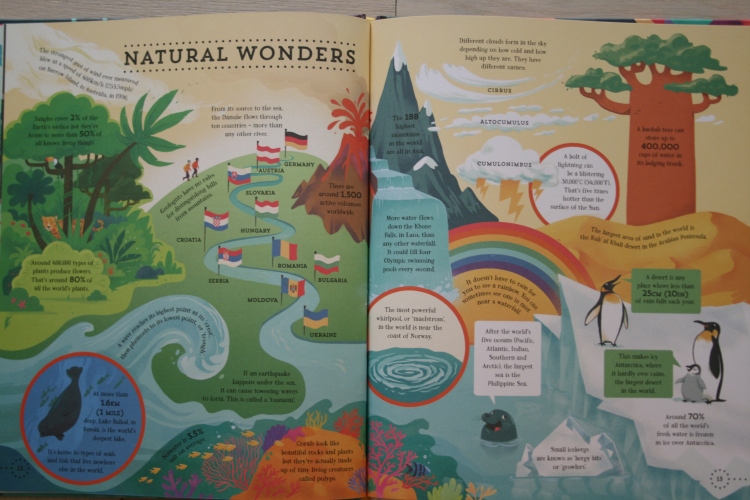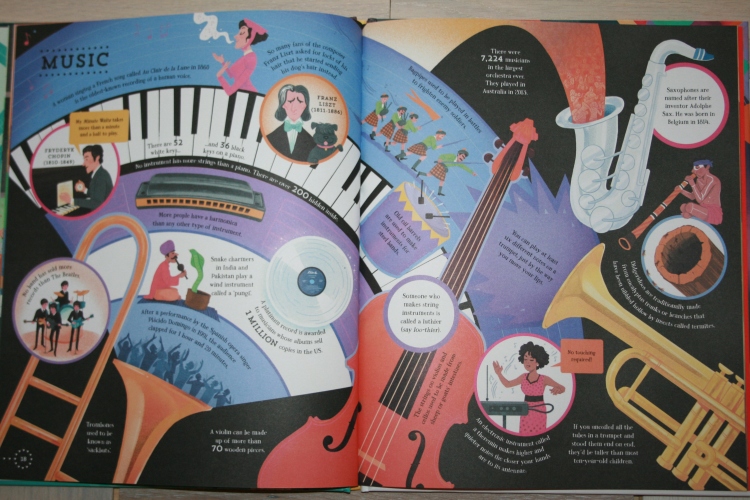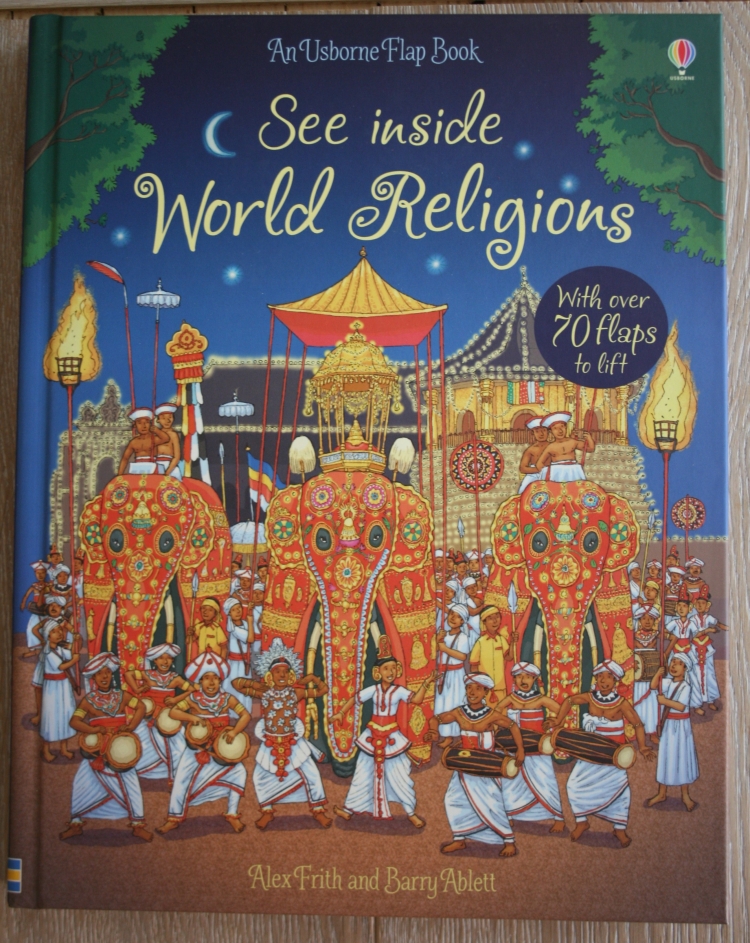I love Usborne books literally for everything, their illustrations, graphics and educational content, presented lightly, funny without being too overwhelming. Just wanted to show you some of the titles, which I chose from their rich and versatile offer. These books present knowledge and facts in the form of flaps (sometimes multiple), it may get you thinking that they are for smaller children because of that, (they also have thick, hard pages), but as you read on you quickly realise that it’s advanced enough to challenge 6, 7 year olds and even older kids.
Look Inside Your Body, Look Inside Science



Cute and colourful little anatomy and science handbooks, of all of them these are the easiest and you can start reading even with 5 year olds. Did you know that we sleep around 22 year in life, or that newborn’s brain weighs as much as two apples, and adult’s as much as 10? Or that there is enough blood in the whole body to fill a bucket and if all the blood vessels we unfolded they could wrap around Earth? This really speaks to child’s imagination, I also still enjoy reading these sort of random and suprising facts.
Big Picture Book – General knowledge





Interesting not only for kids, the only one that hasn’t got flaps, filled with little known facts from such categories as natural wonders, food and drink, buildings, space, music, sport and general knowledge in general, give it a go if you want to show off in front of your friends and ask them question they wouldn’t answer in a million yearsJ. And if your kids just like my Lily are desperate to know why there are sometimes cracks on the pavement, how many buses is in England, how many grains of sand there is on the beach, what is the smallest dot and how many zeros google plexion has (to quote just some of her difficult but how fundamental for a wholesome existence questions) then this book will definitely come handy. Just to give you a little taste a couple of facts from the book to fill in the gaps in your general knowledge:
- the animal that has the thickest fur is otter
- the most often fruit eaten in the world is a banana
- no musician or band has sold more records than the Beatles
- the mammal that can bite the hardest is hippopotamus
- jungles cover 2% of the Earth’s surface but they are home to more than 50% of all known living things
- around 70% of all the world’s fresh water is frozen as ice over Antarctica
- about 70% of human body is water
- Rembrandt painted 90 self portraits
- the Statue of Liberty fingernails are the size of A4 page
Telling the time




Clear and to the point instruction of telling time both on traditional and digital clocks, rules of using am and pm, and telling minutes to and past the hour. At the beginning we find simple and logical explanation that time is a way of dividing everything that happens into hours, minutes and seconds. It also takes us through rules of telling larger periods of time such as days, weeks and months. Kids may find particularly interesting flaps with notes how long some of the common activities take and a game at the end. I recommend this book for children who are learning the clock and aren’t very passionate about it. I know what I’m saying because we are digging our way through this daunting task in sweat and tears at the moment. My patience is almost failing this test and that book is my light in the tunnel. There is also a clock face with movable hands which is very helpful in torturing testing child in time telling. So with this book I am hoping for a happy end to our clock adventure :).
See inside Where food comes from



Despite common kids’ beliefs eggs, milk and ham don’t come from supermarket, and this shocking fact and many others will be revealed in this book much to their astonishment. So what is the journey of the food that ends up on our table, what’s made out of milk and how to process it to get yoghurt or cheese? What comes from farm and what grows on the field, what food do we get from the sea? There is a world map on the last page and children will discover countries of origins of most popular types of food. The most common crop in the world is wheat and it’s products are eaten most often of all.
See inside World religions




Now this book is a little more difficult because of the terms and exotic names, but I think you can start reading it with a 7 year-old. At the beginning simple definition of religion and an overview of world’s biggest religions with illustrations and descriptions of beliefs and rituals, churches, celebrations, priests, God/gods. Children will learn about different imaginations of life after death and most important stories and readings (as it turns out common for Christianity, Hinduism, Islam, Judaism is a story about big flood and Noah’s arc, put in different words and with different names of course in each case.
Questions and answers about science




Another book filled with scientific facts, beautiful illustrations and flaps make it easier to remember such words as chlorophyll, atom, gravity. First dose of biology, chemistry and physics knowledge in a friendly and form that speaks to imagination. Children will get familiar with names of famous scientists, also will find out why the grass is green, or why polar bears aren’t ever cold, and that in fact their skin is black and only their fur is white. How it actually happens that our bodies grow, what causes hurricanes and why rainbow sometimes appears on the sky and many many more clever answers to fascinating questions are packed in this book.
Soon I will write about Usborne activity books that kept us company during many flights and travels and proved to be worthy substitute of iPad, so stayed tuned if you are looking for non grey matter reducing ways of spending time during long journeys :).

